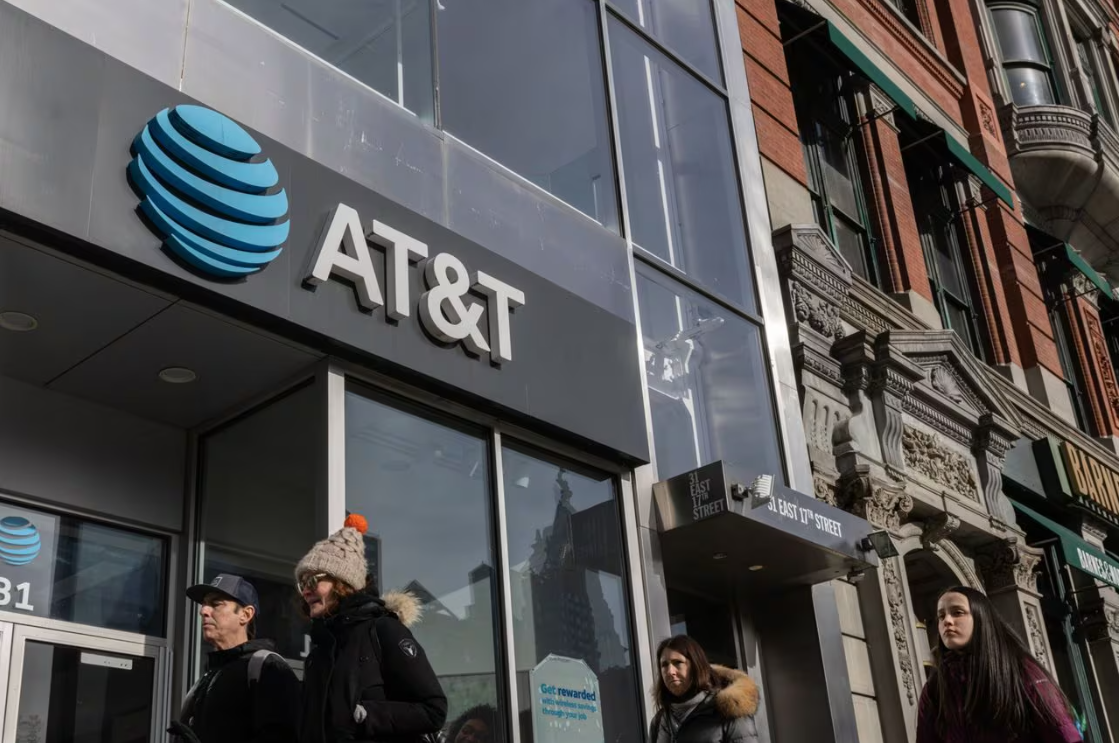客户记录泄露后 AT&T 重置了数百万个密码

【中美创新时报2024年4月1日讯】(记者温友平编译)电信巨头 AT&T 周六宣布,在确定受损的客户数据“在暗网上发布”后,该公司已重置 760 万客户的密码。《纽约时报》记者艾米·奥尔蒂斯(Aimee Ortiz)对此作了下述报道。
AT&T 表示:“我们的内部团队正在与外部网络安全专家合作分析情况。” “据我们所知,泄露的数据似乎来自 2019 年或更早,不包含个人财务信息或通话记录。”
该公司表示,“信息因客户和账户而异”,但可能包括个人的全名、电子邮件地址、邮寄地址、电话号码、社会安全号码、出生日期、AT&T 帐号和密码。
除了这 760 万客户外,6540 万前账户持有人也受到影响。
该公司表示,将“单独联系敏感个人信息泄露的个人,并提供免费的身份盗窃和信用监控服务。”
AT&T 表示,它为受影响的用户重置了密码,并引导客户访问一个网站,其中包含有关如何重置密码的详细信息。 它还表示正在开始“在内部和外部网络安全专家的支持下进行强有力的调查”。
公司代表没有回答有关违规行为如何发生或为何这么长时间未被注意到的具体问题。
TechCrunch 最先报道了密码重置事件,并表示上周已通知 AT&T,“泄露的数据包含可用于访问 AT&T 客户帐户的加密密码。”
TechCrunch 表示,它推迟发布文章,直到该公司“可以开始重置客户帐户密码”。
TechCrunch 在报告中表示,“这是 AT&T 首次承认泄露的数据属于其客户,大约三年前,黑客声称窃取了 7300 万条 AT&T 客户记录。”
据 TechCrunch 报道,AT&T 此前否认其系统遭到破坏,但目前尚不清楚泄漏是如何发生的。
AT&T 表示,它不知道泄露的数据“来自 AT&T 还是其供应商之一”,并且“没有证据表明未经授权访问其系统导致数据集被盗”。
在此事件发生之前,AT&T 客户上个月经历了一次大范围的停电,导致美国各地用户的连接暂时中断了几个小时。2 月 22 日的停电影响了亚特兰大、洛杉矶和纽约等城市的客户。
根据 DownDetector.com 的数据,在高峰时期,该无线运营商收到了大约 70,000 份有关电信和互联网中断的用户报告的服务中断报告。
几天后,AT&T 向受停电影响的客户提供 5 美元的信用额度,以“纠正错误”。
本文最初发表于《纽约时报》。
题图:该公司表示,“信息因客户和账户而异”,但可能包括个人的全名、电子邮件地址、邮寄地址、电话号码、社会安全号码、出生日期、AT&T 帐号和密码。 JEENAH MOON /彭博社
附原英文报道:
AT&T resets millions of passcodes after customer records are leaked
By Aimee Ortiz New York Times,Updated March 31, 2024
Telecommunications giant AT&T announced Saturday it had reset the passcodes of 7.6 million customers after it determined that compromised customer data was “released on the dark web.”
“Our internal teams are working with external cybersecurity experts to analyze the situation,” AT&T said. “To the best of our knowledge, the compromised data appears to be from 2019 or earlier and does not contain personal financial information or call history.”
The company said that “information varied by customer and account,” but that it may have included a person’s full name, email address, mailing address, phone number, Social Security number, date of birth, AT&T account number, and passcode.
In addition to those 7.6 million customers, 65.4 million former account holders were also affected.
The company said it would be “reaching out to individuals with compromised sensitive personal information separately and offering complimentary identity theft and credit monitoring services.”
AT&T said it reset the passcodes for those affected and directed customers to a site with details about how to reset them. It also said that it was starting a “robust investigation supported by internal and external cybersecurity experts.”
A company representative did not address specific questions about how the breach happened or why it went unnoticed for so long.
TechCrunch, which first reported on the passcode reset, said it informed AT&T last week that “the leaked data contained encrypted passcodes that could be used to access AT&T customer accounts.”
TechCrunch said it delayed publishing its article until the company “could begin resetting customer account passcodes.”
In its report, TechCrunch said that “this is the first time that AT&T has acknowledged that the leaked data belongs to its customers, some three years after a hacker claimed the theft of 73 million AT&T customer records.”
AT&T had previously denied a breach of its systems but how the leak happened was unclear, TechCrunch reported.
AT&T said that it did not know whether the leaked data “originated from AT&T or one of its vendors” and that it “does not have evidence of unauthorized access to its systems resulting in theft of the data set.”
The episode comes after AT&T customers experienced a widespread outage last month that temporarily cut off connections for users across the United States for several hours. The Feb. 22 outage affected customers in cities including Atlanta, Los Angeles, and New York.
At its peak, there were around 70,000 reports of disrupted service for the wireless carrier, according to Downdetector.com, which tracks user reports of telecommunication and internet disruptions.
A few days later, AT&T offered customers affected by the outage a $5 credit in an effort to “make it right.”
This article originally appeared in The New York Times.

